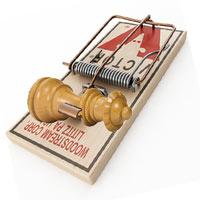
A Potpourri of Traps
Why study traps? There are several good reasons why studying traps might be considered important. First, of course, to avoid becoming a victim of one. Second is to recognize when the opportunity of gaining a quick victory appears. But the third reason is the one I feel is the best: since traps by their very nature are not at all obvious and take advantage of poor play (particularly, though not exclusively, in the openings), understanding how traps work reveal to us certain secret tactical truths in postions that we may never have learned on our own. The last reason is as obvious as the first: they are fun! The first dozen of these traps were shown to me by a chess.com member, Ty Hutchinson, who had a special fondness for them. Mr. Hutchinson, a very sweet man, passed away quite sadly and unexpectedly four years ago on this date (December 17, 2010) at age 41. I thought it would be both appropriate and fitting to present his opening traps without comment as a kind of anniversary memorial. I left some of his notes intact. The following half-dozen traps, bearing the names of famous players, should be known by all chess players.
Max Lange's Trap
Nimzovich's Trap
Lasker's Trap
Tarrasch's Trap in the QGD (Albin Counter-gambit)
Tarrasch's Trap in the Ruy Lopez
|



